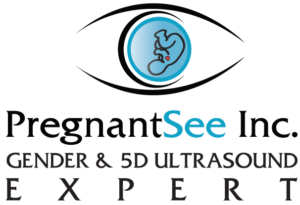3d 21 Week Ultrasound
3D 21 Week Ultrasound: Unveiling Your Baby’s Milestones
Introduction: The Magic of 21 Weeks: Exploring 3D Ultrasound Technology
Welcome to a pivotal moment in your pregnancy journey—the 21-week ultrasound. This isn’t just any scan; it’s your ticket to a breathtaking 3D voyage into your baby’s world. Forget the flat, shadowy images of yesteryears; 3D ultrasound technology at 21 weeks offers a crystal-clear window into your baby’s development. It’s a magical moment, turning abstract movements into visible kicks and somersaults, and we’re here to guide you through this incredible experience.
What to Expect from Your 21-Week 3D Ultrasound Experience
Embarking on a 3D ultrasound is like getting a VIP pass to your baby’s private world. But what exactly sets it apart from 2D and 4D scans? And what should you anticipate during your visit?
3D vs. 4D Ultrasound: Understanding the Differences
| Feature | 3D Ultrasound | 4D Ultrasound |
| Imagery | Provides still, lifelike images of your baby. | Offers moving video images of your baby in real-time. |
| Purpose | Ideal for clear physical details and facial features. | Best for observing movements and behaviors. |
| Best Time | 21-24 weeks for detailed physical features. | Later in pregnancy for dynamic movements. |
The Procedure: What to Expect During Your Visit
- Preparation: Drink plenty of water in the days leading up to your ultrasound to ensure clear images.
- During the Scan: A gel is applied to your belly, and a transducer glides over, translating sound waves into images.
- The Big Reveal: You’ll see your baby’s form, movements, and maybe even a yawn or stretch.
Fetal Development at 21 Weeks: Insights from 3D Sonogram
At 21 weeks, your baby is as lively as ever, and 3D ultrasound brings this stage to life with incredible detail. From tiny toes to the heart beating fiercely, every aspect tells a story of growth and wonder.
Identifying Key Features: What Your Ultrasound Will Reveal
- Facial Features: Eyelids, nose, and even expressions become visible.
- Movements: Watch for kicks, stretches, and maybe a thumb-sucking moment.
- Physical Development: See the spine, limbs, and organs taking shape.
Gender Accuracy: Can We Trust 21-Week Predictions?
Yes, by 21 weeks, the accuracy of gender predictions via ultrasound is significantly high, offering excited parents a reliable sneak peek.

3D/4D vs 5D
Preparing for Your 21-Week Ultrasound: Tips and Recommendations
Maximize your experience and the quality of your 3D ultrasound images with these simple yet effective tips.
Best Practices for Clear Ultrasound Images
- Stay Hydrated: Drink plenty of water in the days before your appointment.
- Timing: Schedule your scan when your baby is most active, often after a meal.
What to Do Before Your Appointment: A Checklist
- Drink water
- Eat a light meal
- Wear comfortable clothing
- Bring questions for your technician
Maximizing the Benefits of Your 21-Week 3D Ultrasound
This ultrasound is more than just a peek; it’s a moment of connection. Embrace it as a chance to bond with your baby, understand their development, and prepare for their arrival.
Schedule Your 21-Week 3D Ultrasound Today: Capture Unforgettable Memories
As you journey through pregnancy, remember that each step is a part of your unique story. The 21-week 3D ultrasound is a chapter filled with wonder, insight, and the closest glimpse of your baby before their grand entrance. Don’t miss this unforgettable milestone.
Understanding Ultrasound Images at 21 Weeks
Deciphering the images on the ultrasound screen can feel like learning a new language. Here’s a brief guide to help you understand what you’re looking at:
- Head: A round shape, often seen in profile, showcasing facial features.
- Body: Look for the spine as a straight line and the heart as a rhythmic flicker.
- Limbs: Arms and legs may be seen moving or crossed in a relaxed position.
Embrace this moment as a heartwarming introduction to your baby’s little quirks and habits.
Risks and Benefits of 3D Ultrasounds
While 3D ultrasounds are generally considered safe, it’s important to approach them with the same caution as any medical procedure.
| Benefits | Risks/Considerations |
| Offers detailed images for bonding. | Should not replace standard medical ultrasounds. |
| Can assist in detecting certain conditions. | Use only as directed by a healthcare provider. |
| Enhances emotional connection to the baby. | Avoid non-medical, souvenir-type scans. |
Ensure your ultrasound is performed by a qualified technician in a medical setting to enjoy these benefits safely.
Comparison Between 2D, 3D, and 4D Ultrasounds
Understanding the different types of ultrasounds can help you appreciate the unique advantages of each:
- 2D Ultrasounds: The traditional method, providing flat, two-dimensional images. Ideal for initial health checks and measurements.
- 3D Ultrasounds: Offers a three-dimensional image, giving depth and detail to your baby’s features.
- 4D Ultrasounds: Essentially a 3D ultrasound in motion, showing real-time activities like smiling or yawning.
This insight allows for informed decisions and sets realistic expectations for your ultrasound experience.

Best Practices for Pregnancy Ultrasounds
To ensure you’re getting the most out of your ultrasounds, consider these best practices:
- Follow Medical Advice: Ultrasounds should be part of your regular prenatal care, as advised by your healthcare provider.
- Choose the Right Time: For 3D ultrasounds, 21-24 weeks is ideal for detailed images.
- Prepare Properly: Drink water and follow any other preparation instructions from your technician.
Emotionally Preparing for Your 21-Week Ultrasound
The anticipation of seeing your baby in 3D can stir a mix of emotions—from excitement to nervousness. Here’s how to prepare your heart and mind for this unique experience:
- Set Realistic Expectations: Remember, the clarity of ultrasound images can vary based on many factors. Embrace the experience for what it is, a chance to connect with your baby, regardless of the picture perfection.
- Share the Moment: If possible, bring a partner, friend, or family member with you. Sharing this experience can deepen your support system and create lasting memories.
- Reflect on the Journey: Take time to reflect on your pregnancy journey thus far. Acknowledging the steps you’ve taken can enhance the significance of this milestone.
Preserving and Sharing Your Ultrasound Memories
After your ultrasound, you’ll likely be eager to share and preserve these first glimpses of your baby. Here are some creative ways to keep these memories alive:
- Create a Baby Book: Include ultrasound prints along with notes and reflections on your pregnancy journey.
- Custom Artwork: Turn your ultrasound image into a custom piece of art for the nursery.
- Digital Keepsakes: Create digital albums or slideshows to share with family and friends, ensuring these moments are easily accessible and preserved.
Navigating Mixed Emotions After Your Ultrasound
It’s natural to have mixed emotions following your ultrasound. If the excitement is mingled with concerns or unexpected news, remember:
- Seek Support: Talk to your healthcare provider about any questions or concerns. They can provide clarity and guidance.
- Connect with Community: Sharing your feelings with trusted friends, family, or support groups can provide comfort and understanding.
- Focus on Health: Prioritizing your health and your baby’s health is paramount. Each step you take is a step towards your baby’s future.
Frequently Asked Questions About 21-Week Ultrasounds
To further assist our readers, we’ve compiled answers to some common questions:
Q: How accurate are gender predictions at 21 weeks?
A: At 21 weeks, gender predictions are generally quite accurate, though not 100%. Always allow for surprises!
Q: Can I find out if my baby is healthy from a 3D ultrasound?
A: While 3D ultrasounds provide detailed images, they are primarily used for viewing physical features rather than diagnosing health issues. Your healthcare provider will guide you on any additional tests or scans for health assessments.
Q: How long does the ultrasound take?
A: The procedure usually takes about 30-60 minutes, depending on various factors like your baby’s position.
Making the Most of Your Ultrasound Appointment
To ensure your 21-week 3D ultrasound is as rewarding as possible, consider these additional tips:
- Ask Questions: Prepare a list of questions for your ultrasound technician or doctor. Inquiring about what you’re seeing on the screen can make the experience more interactive and informative.
- Record the Session: If your clinic allows, recording the ultrasound can help you relive this special moment and share it with your child in the future.
- Relax and Enjoy: While it’s natural to feel anxious, try to relax during your appointment. This is a momentous occasion in your pregnancy journey—embrace it fully.
After the Ultrasound: Next Steps
Following your 21-week ultrasound, you might wonder what comes next. Here are a few steps to consider:
- Review the Images and Report: Go through the ultrasound images and report with your healthcare provider to understand your baby’s development.
- Plan for Future Care: Discuss the next steps in your prenatal care, including any necessary follow-up scans or tests.
- Celebrate the Milestone: Sharing the news and ultrasound images with friends and family can be a joyful way to celebrate this milestone in your pregnancy.
The Role of Ultrasound in Bonding with Your Baby
While the primary purpose of an ultrasound is to assess fetal development and health, it also plays a significant role in emotional bonding. Seeing your baby’s image can make the pregnancy feel more real and can be a profound moment of connection for you and your partner. Embrace this opportunity to start bonding with your baby, talking to them, and imagining the future together.
Staying Informed and Empowered
As you navigate through your pregnancy, staying informed and empowered is crucial. Seek out reputable sources for your information, attend prenatal classes, and engage in discussions with your healthcare provider. Knowledge is power, especially when it comes to your body and your baby.
Conclusion: Celebrating Every Step of Your Pregnancy Journey
Your 21-week 3D ultrasound is more than a medical procedure; it’s a celebration of life and a significant step in your journey toward meeting your baby. By preparing for the ultrasound, engaging with the process, and cherishing the memories, you can make this experience a pivotal part of your pregnancy story.
We hope this guide has provided you with valuable insights, practical advice, and a sense of community as you navigate the wonders of pregnancy. Remember, each journey is unique, filled with its own challenges and joys. Embrace every moment, support one another, and look forward to the incredible journey of parenthood that lies ahead.
We Want to Hear From You
Your experiences, stories, and tips are what make our community vibrant and supportive. Have you had a 21-week 3D ultrasound? What was the experience like for you? Do you have any advice for other expecting parents? Share your thoughts in the comments below or join the conversation on social media. Together, we can build a space of shared wisdom, encouragement, and celebration for every step of the pregnancy journey.


